
The Lygaeidae are a family in the Hemiptera, with more than 110 genera in four subfamilies. The family is commonly referred to as seed bugs, and less commonly, milkweed bugs, or ground bugs. However, while many of the species feed on seeds, some feed on sap (mucivory) or seed pods, others are omnivores and a few, such as the wekiu bug, are carnivores that feed exclusively on insects. Insects in this family are distributed across the world. The family was vastly larger, but numerous former subfamilies have been removed and given independent family status, including the Artheneidae, Blissidae, Cryptorhamphidae, Cymidae, Geocoridae, Heterogastridae, Ninidae, Oxycarenidae and Rhyparochromidae, which together constituted well over half of the former family.

Nysius is a genus of false chinch bugs in the family Lygaeidae. At least 100 described species are placed in Nysius.
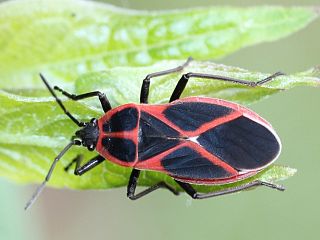
Tropidothorax is a genus of seed bugs or ground bugs belonging to the family Lygaeidae, subfamily Lygaeinae.There are about 11 described species in Tropidothorax.

The Blissidae are a family in the Hemiptera, comprising nearly 50 genera and 400 species. The group has often been treated as a subfamily of the Lygaeidae but was resurrected as a full family by Thomas Henry (1997).

Ischnodemus is a genus in the true bug family Blissidae. The review by Slater (1979) listed 95 species. The genus is found in all major zoogeographic regions, being most abundant on various species of Gramineae. The bodies of the adults are moderately to very elongated. The genus name was coined to refer to this slenderness, from the Greek ἰσχνόσ (ischnos) "feeble" and δέμασ (demas) "body".

Spilostethus is a genus of bugs in the family Lygaeidae. Most species in this genus are from the Palearctic and Oriental regions.
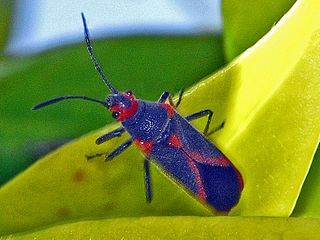
Lygaeinae is a subfamily of ground bugs in the insect family Lygaeidae.
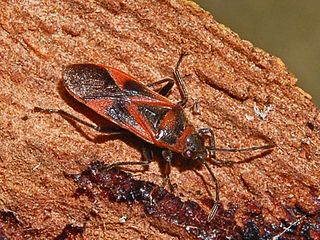
Arocatus is a genus of bugs in the family Lygaeidae.
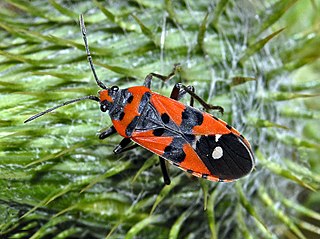
Lygaeus is a genus of seed bugs in the family Lygaeidae. There are more than 60 described species in Lygaeus.
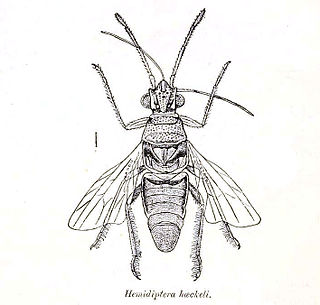
Orsillinae is a subfamily of seed bugs in the family Lygaeidae. There are at least 110 described species in Orsillinae; the type genus is Orsillus.

Ochrimnus is a genus of seed bugs in the family Lygaeidae. There are more than 40 described species in Ochrimnus.

Kleidocerys is a genus of seed bugs in the family Lygaeidae. There are about 17 described species in Kleidocerys.

Oncopeltus is a genus of seed bugs in the family Lygaeidae, which has at least 40 described species.

Anisoscelis is a genus of leaf-footed bugs in the family Coreidae. There are about 11 described species in the genus Anisoscelis.

Melanopleurus is a genus of seed bugs in the family Lygaeidae. There are more than 20 described species in the genus Melanopleurus.

Xyonysius is a genus of seed bugs in the family Lygaeidae. There are about eight described species in Xyonysius.

Metacanthus is a genus of stilt bugs in the family Berytidae. There are more than 20 described species in Metacanthus.

Melacoryphus is a genus of seed bugs in the family Lygaeidae. There are about 11 described species in Melacoryphus, found in Central and North America.

Graptostethus servus is a species of seed bug in the family Lygaeidae. It is found in Europe, Asia, Australia, and in the Pacific region. Larvae are grey and are prey items for chickens.


















